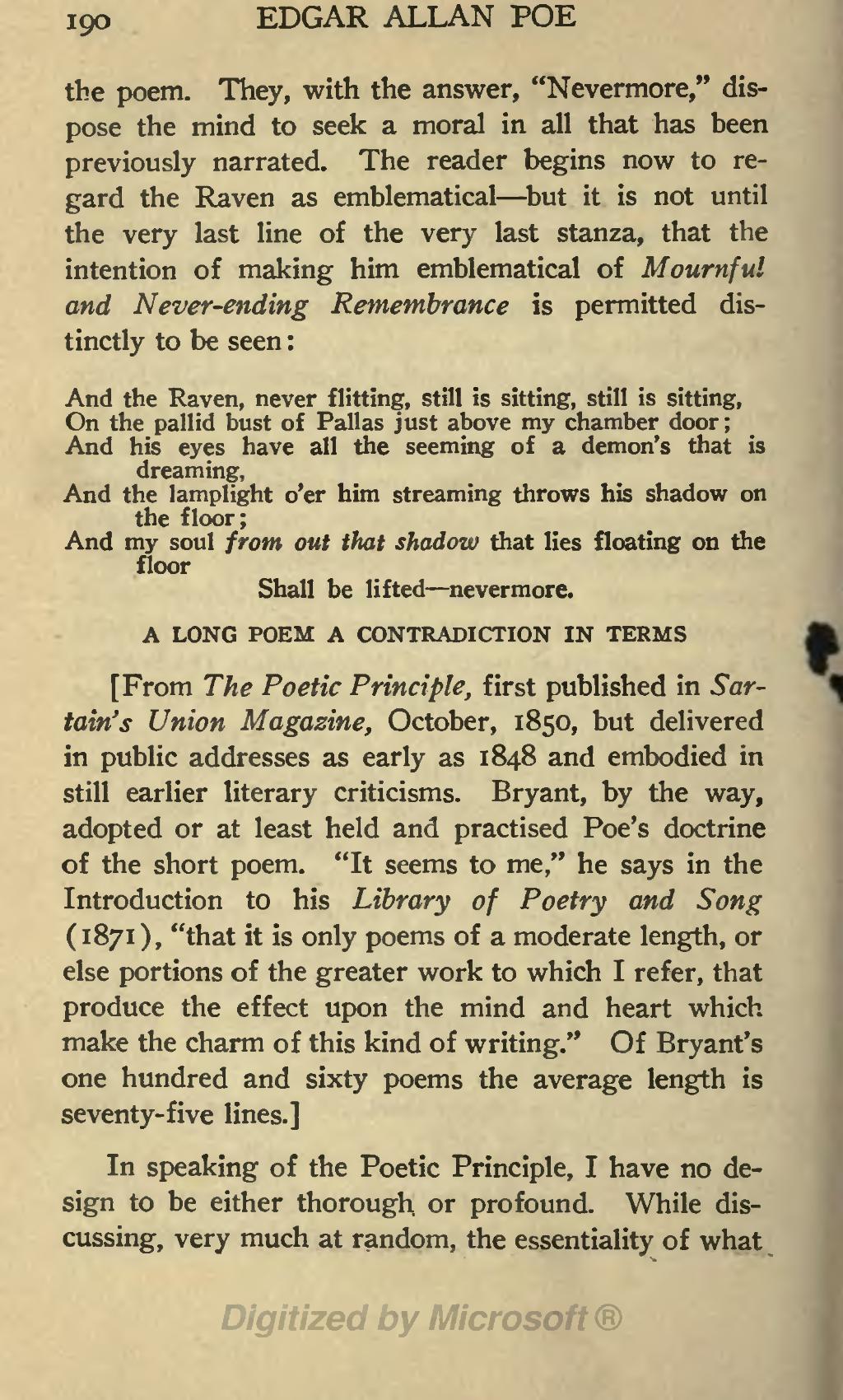the poem. They, with the answer, "Nevermore," dispose the mind to seek a moral in all that has been previously narrated. The reader begins now to regard the Raven as emblematical but it is not until the very last line of the very last stanza, that the intention of making him emblematical of Mournful and Never-ending Remembrance is permitted distinctly to be seen:
And the Raven, never flitting, still is sitting, still is sitting,
On the pallid bust of Pallas just above my chamber door;
And his eyes have all the seeming of a demon's that is dreaming,
And the lamplight o'er him streaming throws his shadow on the floor;
And my soul from out that shadow that lies floating on the floor
Shall be lifted—nevermore.
A LONG POEM A CONTRADICTION IN TERMS
[From The Poetic Principle, first published in Sartain's Union Magazine, October, 1850, but delivered in public addresses as early as 1848 and embodied in still earlier literary criticisms. Bryant, by the way, adopted or at least held and practised Poe's doctrine of the short poem. "It seems to me," he says in the Introduction to his Library of Poetry and Song (1871), "that it is only poems of a moderate length, or else portions of the greater work to which I refer, that produce the effect upon the mind and heart which make the charm of this kind of writing." Of Bryant's one hundred and sixty poems the average length is seventy-five lines.]
In speaking of the Poetic Principle, I have no design to be either thorough, or profound. While discussing, very much at random, the essentiality of what
